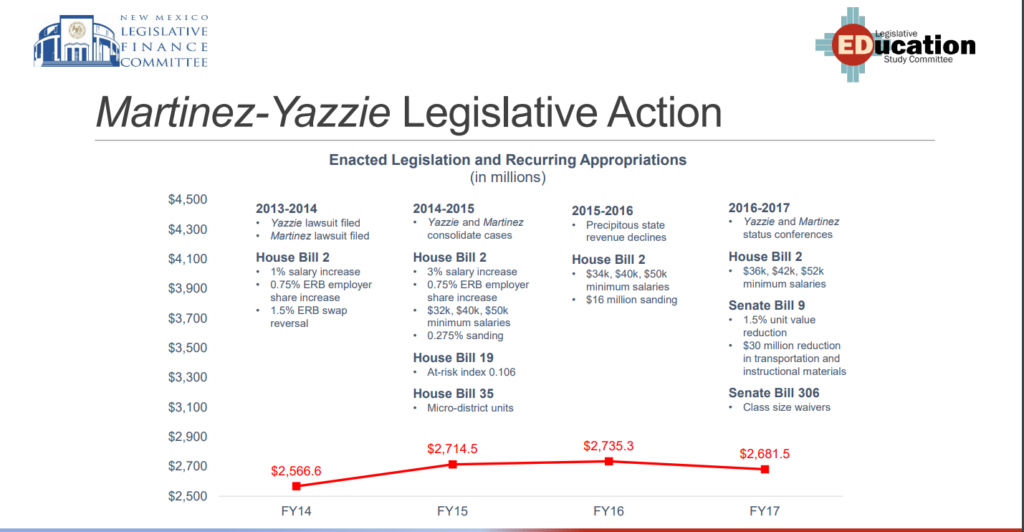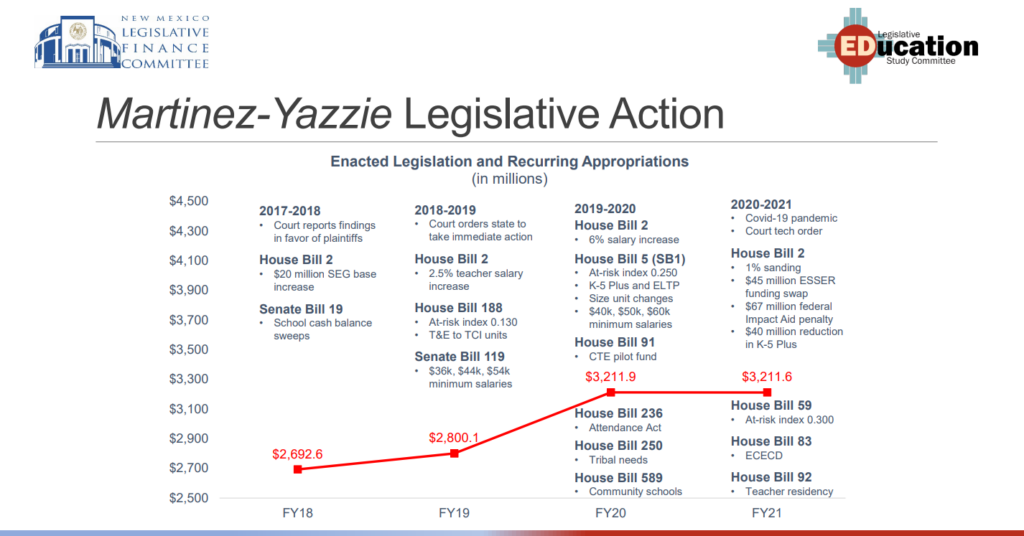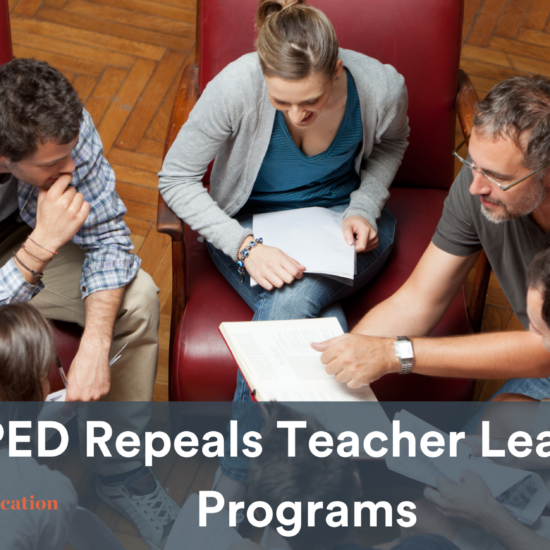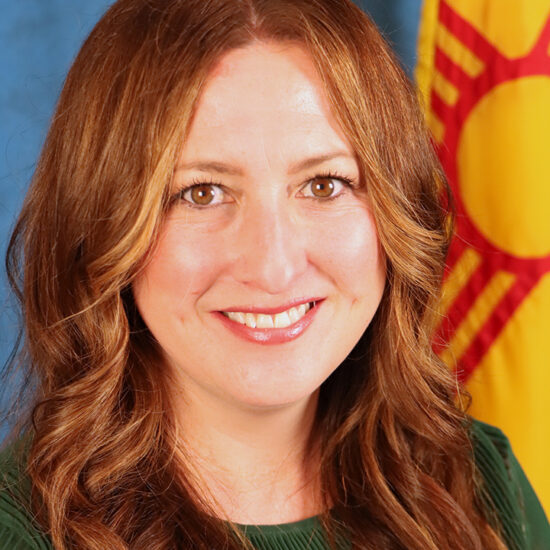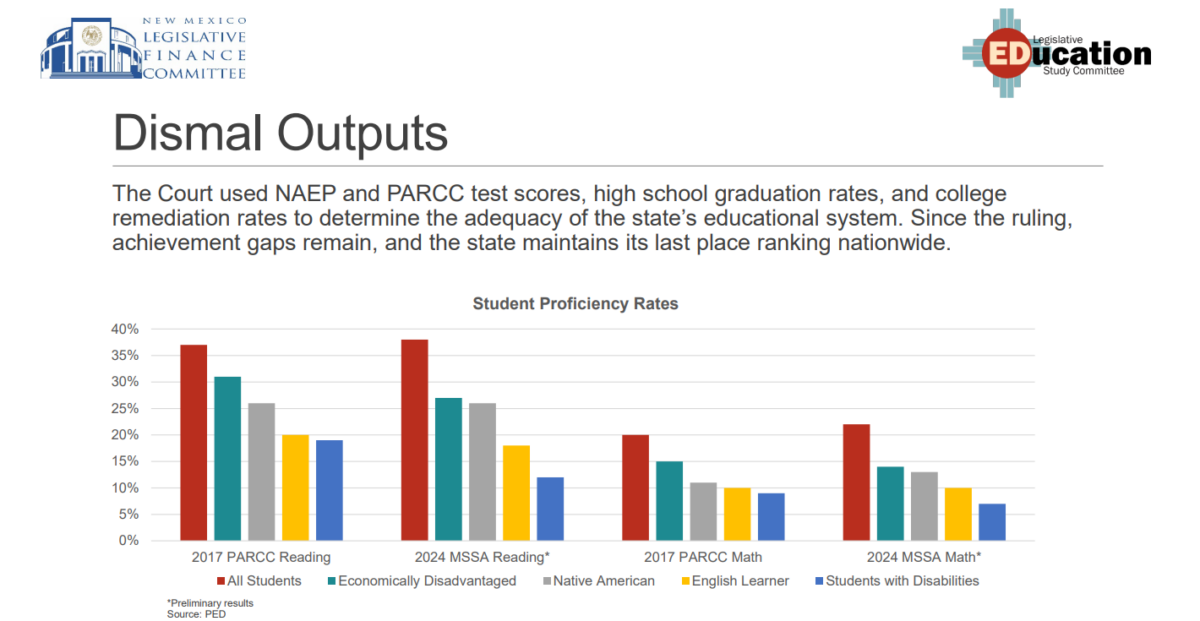
Filed in 2014 and decided in 2018, the Yazzie-Martinez lawsuit sent ripples through the New Mexico education system when a district court judge ruled New Mexico was failing its most at-risk students, six years after the decision and despite state efforts, the state is still producing what the Legislative Finance Committee called, “dismal outputs.”
In making the ruling, First Judicial District Court Judge Sarah Singleton pointed to wording in Article XII, Section I of the New Mexico Constitution which reads, “A uniform system of free public schools sufficient for the education of, and open to, all the children of school age in the state shall be established and maintained.”
On July 25 the New Mexico Legislative Education Study Committee met to discuss work that has been done to address the issues and the complex interplay between funding, policy, and student educational outcomes.
Court Orders Action for At-Risk Students
Dr. Gwen Perea Warniment, Director of LESC, opened the session by emphasizing the nuanced order issued by the court five years ago.
The lawsuit, first filed a decade ago, resulted in a 600-page ruling that criticized the state’s inadequate funding and programming. The court mandated that New Mexico take immediate steps to ensure all schools have the resources necessary to provide at-risk students with the opportunity for a quality education.
“The court gave deference to the legislature and the [governor’s office] to develop a plan that meets constitutional requirements,” Warniment explained.
The court’s directive outlined four specific classes of at-risk students: English language learners, Native American students, economically disadvantaged students, and students with disabilities. The 2018 ruling identified these groups as needing more tailored and specific support, and the state’s responsibility was clear: create a comprehensive plan with accountability measures to improve student outcomes.
Funding Increases and Implementation Challenges
John Sena, Deputy Director of LESC, highlighted the significant financial investments made since the court’s ruling.
“[The legislature has] increased funding to schools on a recurring basis by $1.6 billion, a 58 percent increase from when the court issued its first order,” Sena said. However, he acknowledged that while financial inputs have risen, the system still faces implementation challenges.
A key focus of the legislature’s work has been ensuring that at-risk students receive 25 percent to 50 percent more funding than their peers. Despite legislative efforts to increase the at-risk index and fund pilot programs, achievement gaps remain. Sena pointed out that while there has been progress, particularly for Native American students, other groups, such as English learners and students with disabilities, have seen slower improvements.
Sunny Liu, Principal Analyst for the Legislative Finance Committee (LFC), discussed the state’s investment in structured literacy programs designed to help students learn to read, since the most recent data from the state shows only 38 percent of students can read at grade level.
“We’ve trained over 9,000 teachers in the science of reading,” Liu noted, emphasizing the importance of long-term investments in teacher training and curriculum development. These initiatives aim to create a more robust foundation for literacy, particularly for students who traditionally struggle.
Liu also highlighted the state’s commitment to improving teacher pay, which has increased from an average of $47,000 to $63,000, raising New Mexico’s national ranking from 49th to 22nd for well-paid educators. Despite these efforts, teacher vacancies remain a problem, Liu said there is a need for improved recruitment initiatives.
In the LFC presentation, Liu compared data from 2017’s PARCC exam, which was administered at the end of the school year, to preliminary results from 2024’s NM-MSSA exam. He said New Mexico is seeing “dismal outputs” despite efforts from the state.
Persistent Challenges and the Road Ahead
Despite notable strides, the committee acknowledged persistent challenges.
Chronic absenteeism, particularly among at-risk groups, remains high, exacerbated by the pandemic’s lingering effects. Additionally, while English language arts proficiency has shown a four percent improvement, the most recent data shows that math scores continue to lag, with insufficient investments in STEM education cited as a contributing factor.
Greg Frostad, a representative of the Public Education Department, underscored the need for systemic change and patience.
“We’re making foundational changes, but these require time to mature,” Frostad told the committee. He called for a comprehensive approach, emphasizing that piecemeal solutions are unlikely to yield sustainable improvements.
“It’s about creating a cohesive vision that supports educators, engages students, and ultimately transforms our educational landscape,” Frostad said.
Soon, the PED is expected to release student results from the 2023-24 school year which will show if the state is making improvements in student academic performance. While Frostad could not give a date for this release, he said the department is currently verifying the data and it will soon be ready.
The committee’s discussions also touched on school district governance, with calls for more consistent leadership and oversight. Legislators expressed anger that despite significant improvements in funding, student results are not improving fast enough, with significantly less improvements among Yazzie-Martinez groups.
Upset with the lack of improvements Senator William P. Soules (D – Doña Ana) expressed concerns about frequent changes in leadership at PED and different policy directions each of the new leaders has brought, which he argued has disrupted continuity and the implementation of effective strategies.
Currently, the Public Education Department is an entity under the control of the Governor of New Mexico. PED is managed by the Secretary of Education, who is an official appointed by the governor.
While PED, LFC, and legislators from across the political aisle have called for the state to meet its responsibilities to the Yazzie-Martinez Decision, no single entity has taken ownership over the whole response. It is unclear who, if any entity, owns the responsibility of improved results.
Legislators were told the path forward will require not only continued financial investment but also a comprehensive approach that addresses and removes the systemic barriers preventing at-risk students from succeeding. For now, the state continues to see dismal outputs from all the effort and money it puts into the education system.
